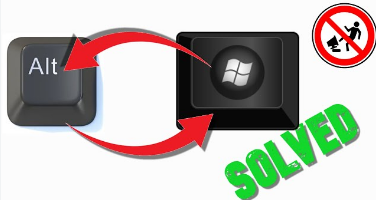When it comes to making your keyboard work smarter, switching alt and windows key switched is often the go-to move for customization. But there’s a world of possibilities to enhance your typing experience and productivity beyond this single tweak. Whether you’re a coder, writer, or a general user, exploring these keyboard enhancement ideas can save time and streamline your workflow.
1. Remap Keys for Specific Tasks
Key remapping tools allow you to assign personalized functions to any key on your keyboard. Programs like AutoHotkey or similar utilities provide the ability to streamline routine tasks. For instance:
• Assign F1 to launch specific apps like your browser or editor.
•
• Map unused keys to execute shortcuts, such as quickly inserting your email address or formatting text in your documents.
•
This approach minimizes disruptions and helps you work faster, especially if you execute certain repetitive actions daily.
2. Enable Hyper Key Functionality
The “Hyper Key” involves assigning a single key to act as a combination of Ctrl + Alt + Shift + Command. With this key, you can create custom shortcuts for virtually any action without conflicting with existing ones. Many users map the Caps Lock key for this functionality, giving new life to a key that’s often underutilized.
For example:
• Hyper + F could open your File Explorer.
•
• Hyper + W might bring up your work email directly.
•
Hyper Key setups take multitasking to new heights, whether on macOS or Windows.
3. Use Layered Shortcuts
Some advanced keyboards and software support layered shortcuts, often referred to as “modifier layers.” By pressing a designated modifier key, you can activate entirely new functions across your layout. For example:
• Layer 1 could handle work-related shortcuts like copy/paste or navigation keys.
•
• Layer 2 might map media controls or custom macros for gaming.
•
This technique works especially well for professionals who frequently toggle between work modes.
4. Experiment with Alternate Layouts
Explore keyboard layouts like Colemak or Dvorak to improve ergonomics and speed. These layouts significantly reduce finger travel compared to the standard QWERTY layout, potentially boosting typing comfort and efficiency. While there’s an adjustment period, users who transition to these layouts often report long-term reductions in typing fatigue.
5. Add RGB Shortcuts for Visual Feedback
RGB keyboards offer more than just aesthetics. With programmable lighting effects, you can assign specific colors to different key groups or shortcuts. For instance:
• Highlight commonly used shortcuts in green.
•
• Use red lighting to signify keys that activate critical functions.
•
This visual feedback ensures faster location of keys in low-light settings or during quick tasks.
Thoughtful Optimization for Efficiency
Customizing your keyboard goes far beyond simple key swaps. By experimenting with remapping, Hyper Keys, alternate layouts, and RGB feedback, you can craft a more tailored and enjoyable typing experience. Whether you’re aiming for productivity or ergonomic comfort, these enhancements can elevate the way you interact with your keyboard. Start experimenting and discover what approach works best for your unique needs!
